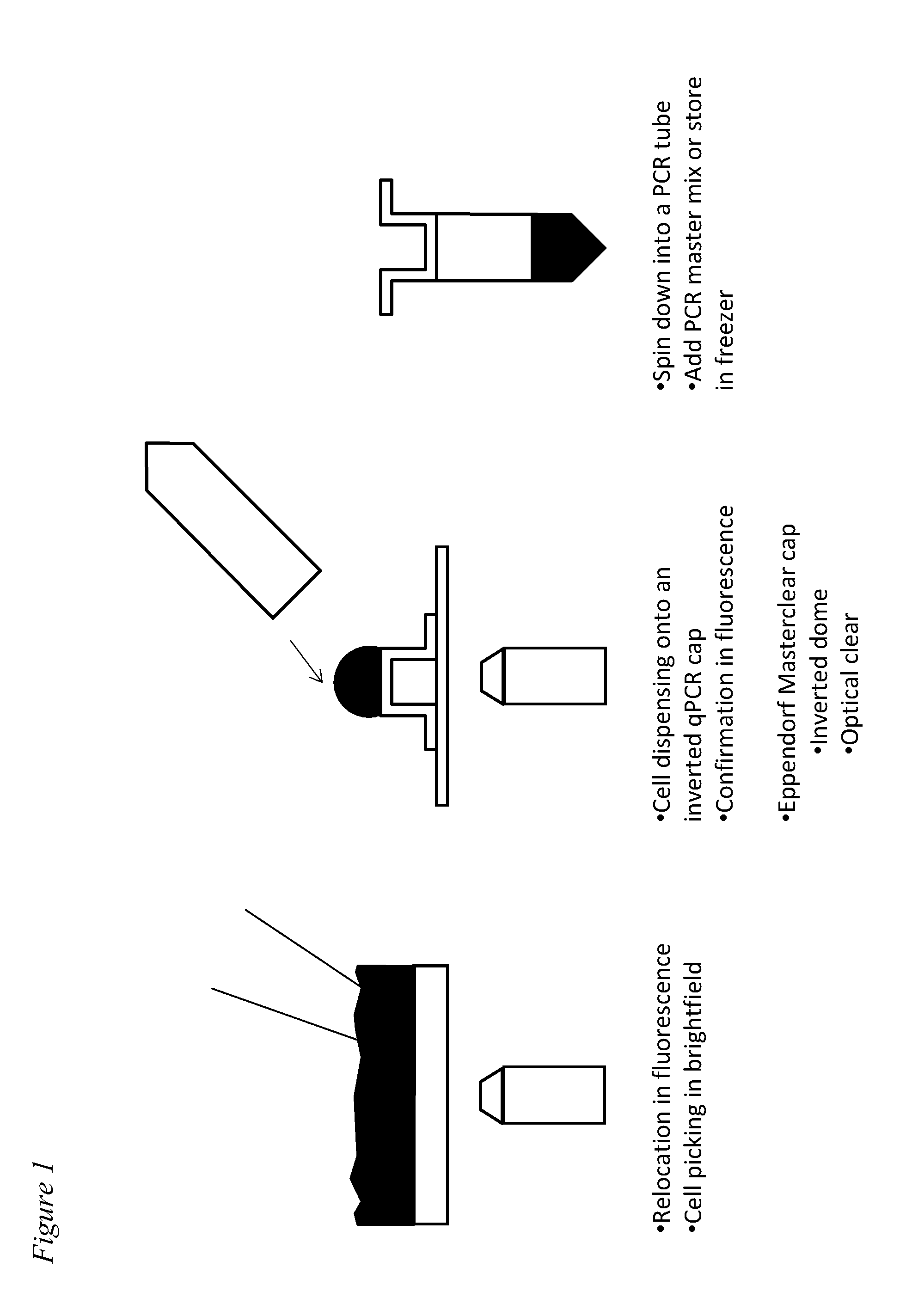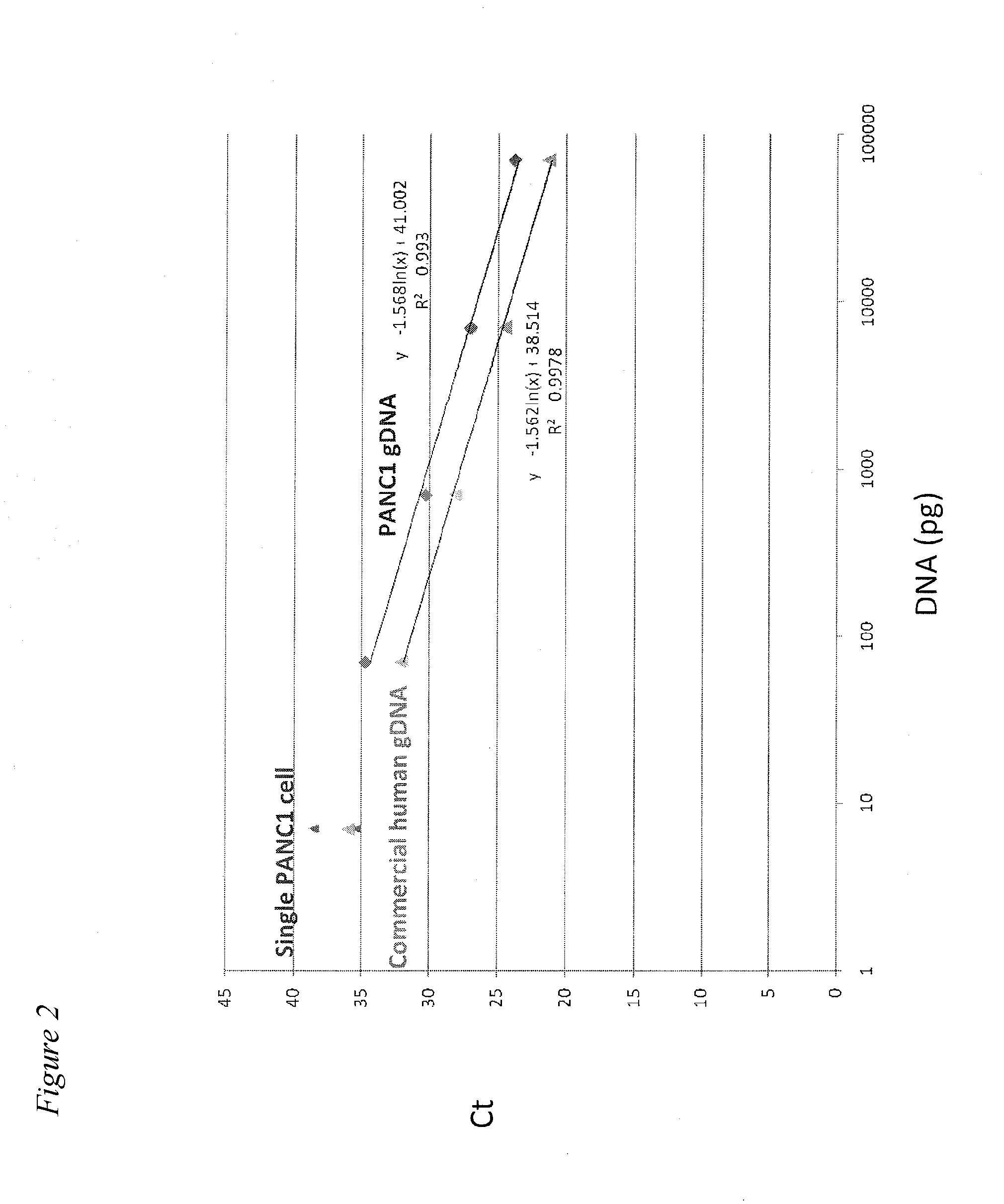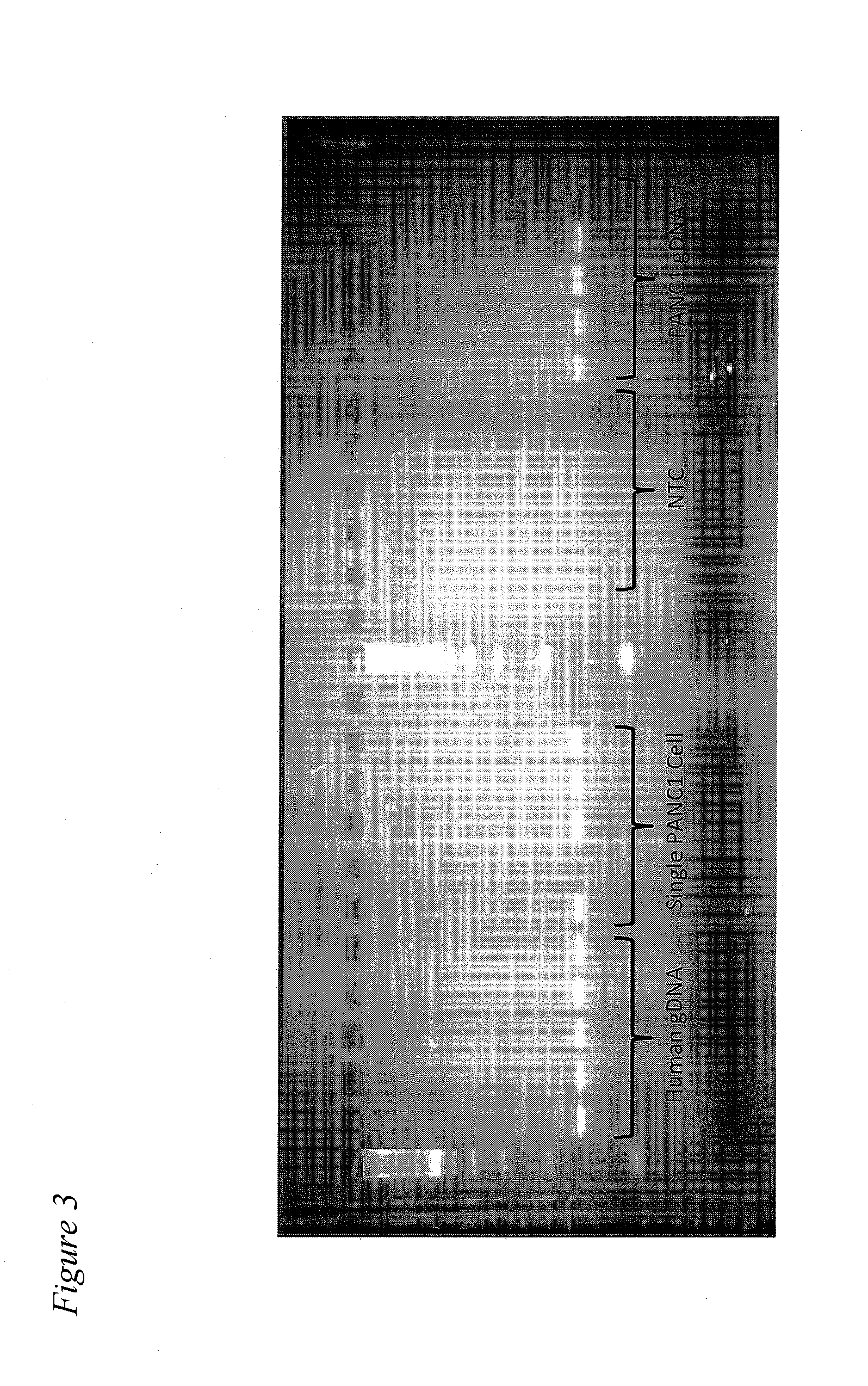Methods for obtaining single cells and applications of single cell omics
- Summary
- Abstract
- Description
- Claims
- Application Information
AI Technical Summary
Benefits of technology
Problems solved by technology
Method used
Image
Examples
example 1
Identification of CTCs in a Blood Sample
[0087]Peripheral blood is collected from primary lung cancer patients in a cell-free DNA blood collection tube (Streck, Omaha, Nebr.). A white blood cell count is taken from the blood sample using a hemocytometer, and the cellular concentration of the sample is titrated so that it is about 3 million cells per slide when the titrated sample is disposed on a glass slide. After lysing red blood cells using ammonium chloride, the nucleated cells are distributed in a monolayer onto the glass slide. After paraformaldehyde fixation and methanol permeabilization, cells are incubated with anti-Cytokeratin cocktail and anti-CD45 antibodies followed by Alexa 555-conjugated secondary antibody and DAPI as a nuclear stain.
[0088]The glass slide is imaged (custom high speed scanning microscope, Epic Sciences at 10×) and “candidate” CTCs are identified as being Cytokeratin positive (CK+), CD45 negative (CD45−) with an intact nucleus using proprietary computer ...
example 2
Capture of Individual CTCs in a Blood Sample
[0089]CTCs are identified in a blood sample according to the general procedure described in Example 1. The CTCs on the glass slide are relocated on a fluorescence microscope. The glass slide is soaked in PBS buffer for 30 minutes to let the coverslip float off, and then soaked in methanol for about 1 hour to dissolve the glycerol-based mounting media. To perform CTC picking, the slide is covered with BSA solution which can help loosen the adhesion of CTCs on the glass slide and significantly reduce the stiction of CTCs to glass capillaries used for picking. A micromanipulator mounted on the microscope stage is used to pick CTCs from the slide one CTC at a time. The isolated CTC is put into a tube, either separately or with other isolated CTCs, for downstream analysis.
example 3
Capture of Single CTCs in a Blood Sample
[0090]An exemplary embodiment of the method for capturing single CTCs is illustrated in FIG. 1. In this example, transparent qPCR tube cap that allows the detection of fluorescence detection through the cap for real-time PCR is laid upside down on top of glass slide. A small (for example, 1 to 5 μl) droplet of PBS buffer is put into the cap and the aspirated CTCs is dispensed into the PBS droplet. Then, fluorescence detection is performed to allow detection and confirmation of the number of CTCs and the purity of CTCs in the droplet. Finally, the cap is closed with a PCR tube. With a quick spin, the droplet will be at the bottom of the PCR tube.
PUM
| Property | Measurement | Unit |
|---|---|---|
| Fraction | aaaaa | aaaaa |
| Fraction | aaaaa | aaaaa |
| Fraction | aaaaa | aaaaa |
Abstract
Description
Claims
Application Information
 Login to View More
Login to View More - R&D
- Intellectual Property
- Life Sciences
- Materials
- Tech Scout
- Unparalleled Data Quality
- Higher Quality Content
- 60% Fewer Hallucinations
Browse by: Latest US Patents, China's latest patents, Technical Efficacy Thesaurus, Application Domain, Technology Topic, Popular Technical Reports.
© 2025 PatSnap. All rights reserved.Legal|Privacy policy|Modern Slavery Act Transparency Statement|Sitemap|About US| Contact US: help@patsnap.com



